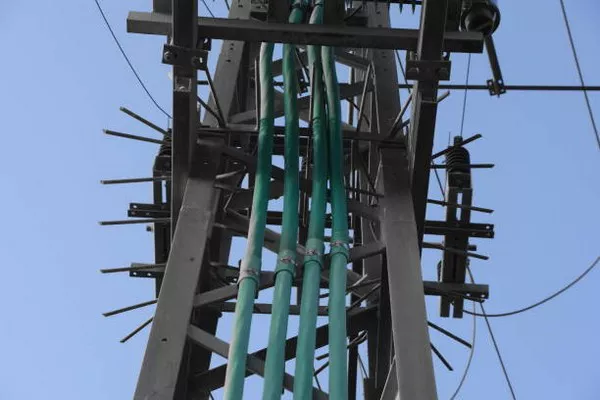In the realm of electronics, transformers play a crucial role in converting electrical energy from one voltage level to another, enabling efficient power distribution and device operation. While larger transformers often take center stage in power grids and industrial applications, smaller transformers are equally vital components found in various electronic devices, facilitating voltage regulation, signal isolation, and impedance matching. In this article, we delve into the world of small transformers, elucidating their significance, types, applications, and evolving trends in contemporary electronics.
Understanding Small Transformers:
Small transformers, also known as low-power transformers or signal transformers, are compact devices designed to handle relatively lower power levels compared to their larger counterparts. Despite their diminutive size, they perform essential functions in electronic circuits, ranging from voltage conversion to signal conditioning.
These transformers typically consist of a primary coil, a secondary coil, and a magnetic core. When an alternating current (AC) flows through the primary coil, it generates a magnetic field in the core, inducing a voltage in the secondary coil through electromagnetic induction. By varying the number of turns in the coils and the core material, small transformers can step up, step down, or isolate voltages as per the requirements of the circuit.
Types of Small Transformers:
Small transformers come in various configurations and designs tailored to specific applications. Some common types include:
Isolation Transformers: These transformers are primarily used to electrically isolate two circuits while transferring power between them. They help prevent ground loops, reduce noise interference, and enhance safety by breaking the electrical connection between the input and output circuits.
Step-Up Transformers: Step-up transformers increase the voltage level from the input to the output, making them suitable for applications requiring higher voltage levels, such as inverter circuits and voltage boosters.
Step-Down Transformers: Conversely, step-down transformers reduce the voltage level from the input to the output, making them ideal for applications where a lower voltage is required, such as power adapters and voltage regulators.
Audio Transformers: These transformers are specifically designed for audio applications, such as impedance matching in audio amplifiers, audio signal coupling, and balanced-to-unbalanced signal conversion in audio equipment.
RF Transformers: RF (Radio Frequency) transformers are optimized for high-frequency applications, including impedance matching in radio transmitters and receivers, antenna tuning circuits, and RF amplifiers.
Applications of Small Transformers:
The versatility of small transformers lends them to a wide array of applications across various industries. Some notable applications include:
Power Supplies: Small transformers are integral components of power supplies used in consumer electronics, telecommunications equipment, and industrial machinery. They help regulate voltage levels and ensure efficient power distribution within electronic devices.
Audio Equipment: In audio systems, small transformers facilitate impedance matching between audio sources and amplifiers, ensuring optimal signal transfer and fidelity. They are also used in audio mixers, microphones, and instrument amplifiers.
Telecommunications: Small transformers play a vital role in telecommunications infrastructure, including DSL modems, Ethernet interfaces, and telephone line interfaces. They help isolate communication signals, suppress noise, and ensure reliable data transmission.
Industrial Automation: In industrial automation and control systems, small transformers are used in motor drives, servo amplifiers, and sensor interfaces to regulate voltage levels, provide galvanic isolation, and protect sensitive electronics from electrical disturbances.
Medical Devices: Small transformers find applications in various medical devices, including patient monitoring systems, MRI machines, and diagnostic equipment. They help ensure patient safety by providing electrical isolation and preventing ground loops in medical instrumentation.
Renewable Energy Systems: In renewable energy systems such as solar inverters and wind turbines, small transformers are employed to interface with the power grid, step up voltage levels from renewable energy sources, and ensure efficient power conversion.
Evolving Trends in Small Transformers:
With the rapid advancement of technology and the growing demand for smaller, more efficient electronic devices, several trends are shaping the design and development of small transformers:
Miniaturization: As consumer electronics continue to shrink in size, there is a growing emphasis on miniaturizing components, including small transformers. Manufacturers are leveraging advanced materials, innovative designs, and manufacturing processes to produce smaller and more compact transformers without compromising performance or reliability.
High-Frequency Operation: With the proliferation of high-frequency applications in wireless communication, IoT devices, and automotive electronics, there is a rising demand for small transformers capable of operating at higher frequencies while maintaining low loss and high efficiency.
Integration and Multifunctionality: To streamline circuit design and reduce component count, there is a trend towards integrating multiple functions into a single transformer. This includes combining isolation, impedance matching, and voltage conversion functions within a compact package, thereby reducing board space and simplifying assembly.
Efficiency and Energy Savings: With a growing focus on energy efficiency and sustainability, there is an increased emphasis on developing small transformers with higher efficiency ratings and lower power losses. This not only reduces energy consumption but also improves the overall performance and reliability of electronic systems.
Customization and Flexibility: As electronic applications become more diverse and specialized, there is a growing demand for customizable small transformers tailored to specific requirements. Manufacturers are offering customizable designs, materials, and winding configurations to meet the unique needs of different industries and applications.
See Also What Is Oil Immersed Transformer
Conclusion:
Small transformers may be diminutive in size, but their impact on modern electronics is substantial. From voltage regulation and signal conditioning to impedance matching and isolation, these compact devices play a critical role in enabling the efficient operation of electronic circuits across a wide range of applications and industries. As technology continues to evolve, the demand for smaller, more efficient, and versatile transformers is expected to grow, driving innovation and advancement in the field of electronics.

